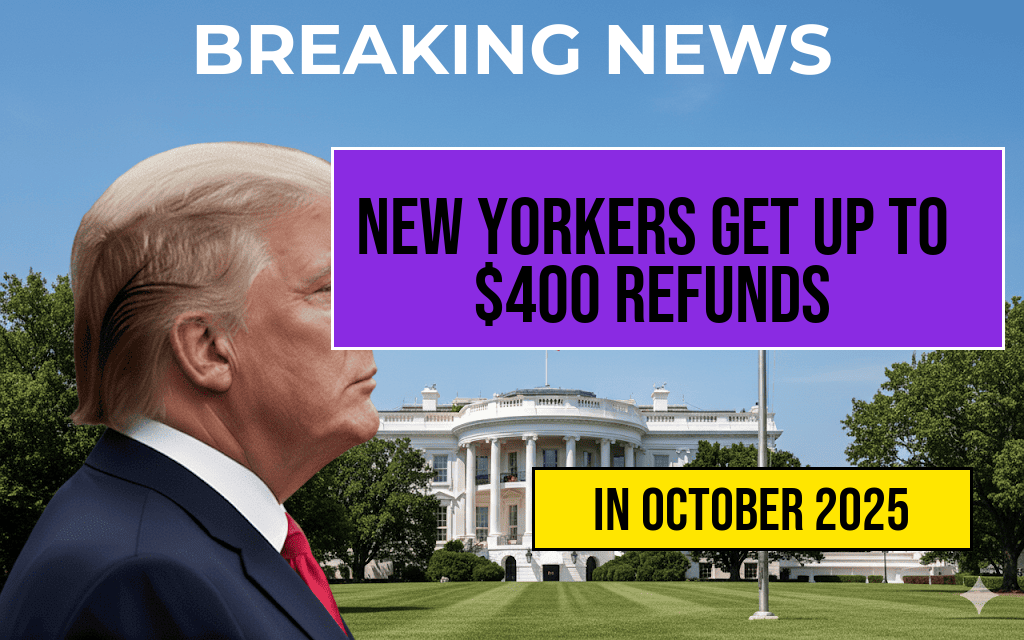Eligible New Yorkers are set to receive inflation refund checks in the mail, ranging from $25 to $400, as part of a state initiative aimed at alleviating the financial burden caused by rising living costs. The New York State Department of Taxation and Finance has announced that these payments will begin to be issued in late October 2023. The one-time payments are designed to assist families and individuals who meet specific income criteria, providing much-needed relief amid ongoing economic challenges. The state has allocated approximately $1.2 billion for this program, which is expected to benefit millions of residents across New York.
Who is Eligible for the Refund Checks?
To qualify for these inflation refund checks, applicants must meet the following criteria:
- Filing status as a single taxpayer must have a federal adjusted gross income of $250,000 or less.
- Married couples filing jointly must have a combined federal adjusted gross income of $500,000 or less.
- Resident taxpayers must have filed a New York State tax return for the 2022 tax year.
In addition to these income thresholds, taxpayers who qualify will receive a payment based on their filing status.
Payment Amounts and Distribution Timeline
The amount of the inflation refund check varies depending on the taxpayer’s situation:
| Filing Status | Refund Amount |
|---|---|
| Single Filers | $25 + $75 for each dependent |
| Married Filing Jointly | $50 + $150 for each dependent |
Checks are scheduled to be mailed starting late October, with most eligible recipients expected to receive their payments by the end of the year. The state encourages all residents to ensure their mailing addresses are up to date with the Department of Taxation and Finance to avoid any delays.
How to Check for Eligibility
New Yorkers can determine their eligibility by visiting the New York State Department of Taxation and Finance website. The site provides detailed information about the refund process and how to apply if you have not yet filed your 2022 tax return. Additionally, residents can contact the department directly for any questions regarding their status.
Why is New York Offering These Refunds?
The decision to distribute inflation refund checks stems from the significant economic pressure many residents are facing due to inflation, which has led to increased prices for essential goods and services. According to a recent report by the Forbes, inflation rates have reached levels not seen in decades, causing many households to struggle with basic expenses. The state government aims to provide financial support to help alleviate these pressures and stimulate local economies.
Community Reactions and Future Outlook
As New York prepares to distribute these checks, the focus remains on ensuring that all eligible residents receive their funds in a timely manner. The impact of these payments may provide a temporary relief but highlights the broader conversations about economic sustainability and support for vulnerable populations in the state.
Frequently Asked Questions
What are the eligibility requirements for the inflation refund checks in New York?
Eligible New Yorkers must meet certain criteria, including being a resident of New York State and having filed their 2021 state tax return by the deadline. Additional income limits may apply.
How much can eligible individuals expect to receive from the inflation refund?
Eligible individuals can receive up to $400 as part of the inflation refund checks, with the exact amount depending on their income and filing status.
When will the inflation refund checks be mailed out?
The inflation refund checks are expected to be mailed out starting in October 2023, with recipients receiving their checks based on their eligibility and processing times.
Will I need to take any action to receive my inflation refund check?
How can I check the status of my inflation refund check?
To check the status of your inflation refund check, you can visit the New York State Department of Taxation and Finance website, where they provide updates and tools for tracking your refund.

Leave a Reply